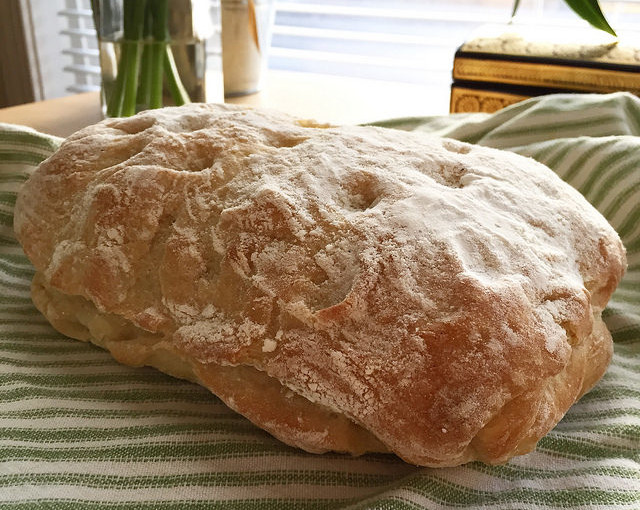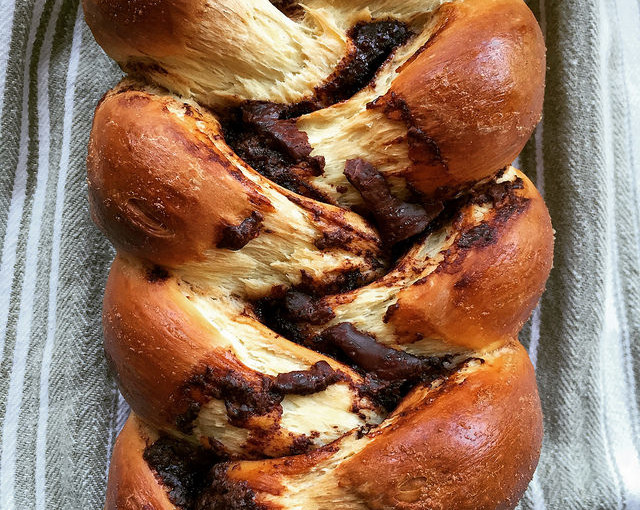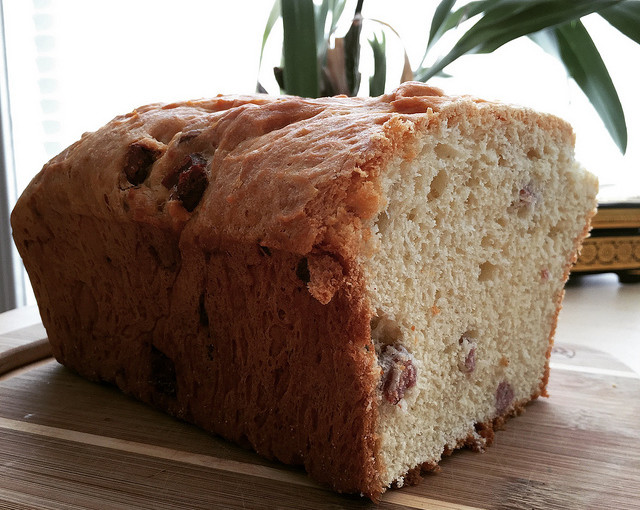A lot of the bread I bake is done with the intent of eating it over the course of several days — as toast, in sandwiches, with soup, etc. But sometimes you need something sweet and decadent and meant to be scarfed down fresh out of the oven. And cinnamon buns fit the bill on all accounts.
 For a lot of Americans (especially those who make frequent trips through an airport or mall), Cinnabon is the apex of cinnamon roll-goodness. But frankly they tend to be cloyingly sweet, huge, and not consistently fresh. This recipe from The Bread Baker’s Apprentice yields cinnmon buns that are fluffy and balanced, not overly sweet or buttery, and just the right size for breakfast.
For a lot of Americans (especially those who make frequent trips through an airport or mall), Cinnabon is the apex of cinnamon roll-goodness. But frankly they tend to be cloyingly sweet, huge, and not consistently fresh. This recipe from The Bread Baker’s Apprentice yields cinnmon buns that are fluffy and balanced, not overly sweet or buttery, and just the right size for breakfast.
If you’re the planning type, these buns can be finished 90% of the way the day before baking to ensure optimal freshness and straight-from-the-oven warmth. Unfortunately, the long proofing time if the dough is chilled (3-4 hours) might require getting up early in the morning to pull the buns from the fridge.
Better-than-Cinnabon Cinnamon Buns Recipe
Adapted from Peter Reinhart’s The Bread Baker’s Apprentice, Yields 8-10 cinnamon buns
Ingredients
- 3 1/4 tablespoons granulated sugar
- 1/2 tsp salt
- 3 tablespoons unsalted butter, room temperature
- 1/2 egg, slightly beaten (about 1.5 tablespoons of egg)
- 1/2 tsp grated lemon zest
- 1 3/4 cups (8 oz) AP or bread flour
- 1 tsp instant yeast
- 1/2 cup plus 1 tablespoon buttermilk or whole milk, room temperature
- 1/4 cup cinnamon sugar (3 1/2 tbsp sugar plus 3/4 tbsp ground cinnamon)
Cinnamon Buns Instructions
- Cream sugar, salt and butter together. Add egg and lemon zest and mix until smooth. Then add flour, yeast and milk.
- Knead with a dough hook for about 10 minutes, or by hand for 12-15 minutes. The dough should be silky and supple, but not too dry. The dough should pass the windowpane test. Transfer to a lightly oiled bowl and roll dough to coat with oil. Cover with plastic wrap.
- Let sit at room temperature for about 2 hours, or until dough doubles in size.
- Turn dough out onto a lightly oiled surface and dust with flour. Gently roll out with a rolling pin to make a rectangle about 2/3 inch thick. Sprinkle cinnamon sugar over surface of dough, then roll up into a log. Cut in half with a sharp knife, then cut each half in half. Finally cut the four pieces in half once more to make 8 pieces.
- Arrange the buns in a parchment lined (or sprayed) pan about 1/2″ apart. They shouldn’t be touching, but should be close to each other. (From personal experience, if you don’t place them close enough together, they’ll kind of unravel as they bake. Mist with spray oil and cover with plastic wrap.
- Proof at room temperature for 75-90 minutes, until pieces have nearly doubled in size.
- At this point you can stick the cinnamon buns in the refrigerator and retard them for up to 2 days. Pull them out 3-4 hours before baking to allow for proofing. I did this for breakfast buns before work, so I had to get up around 4 to pull them out of the fridge (and promptly when back to bed).
- Preheat the oven to 350F with the oven rack on the lowest shelf.
- Bake for 20-30 minutes or until golden brown.I used a glass pan so I could check the doneness of the undersides easily.
- Let cool in the pan for about 10 minutes, then streak with fondant glaze while buns are warm but not too hot.
White Fondant Glaze
Sift 1 cup powdered sugar into a bowl, then whisk with 1-2 tablespoons of warm milk until sugar is dissolved. If you like, you can add a few drops of lemon extract or some more cinnamon, but I like mine to be pure sugary goodness.

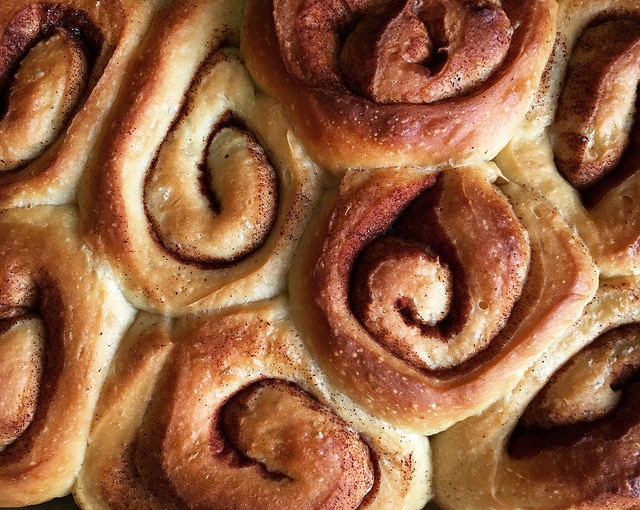


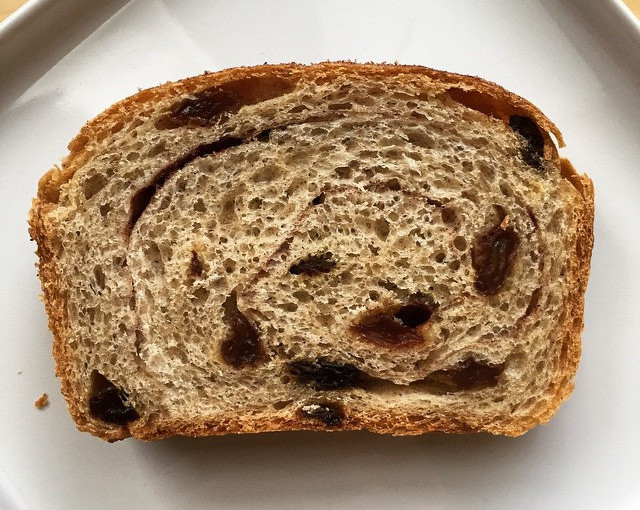

 Adding chunky ingredients like dried fruit and nuts should always be done towards the end of the kneading process, otherwise they end up getting squished. I divided the dough in half before incorporating the walnuts and raisins, then folded the ingredients in until they were (somewhat) evenly distributed.
Adding chunky ingredients like dried fruit and nuts should always be done towards the end of the kneading process, otherwise they end up getting squished. I divided the dough in half before incorporating the walnuts and raisins, then folded the ingredients in until they were (somewhat) evenly distributed.


